King Charles Built His Dream Town. The Results Have Shocked The Critics
The King's ideal town of the future
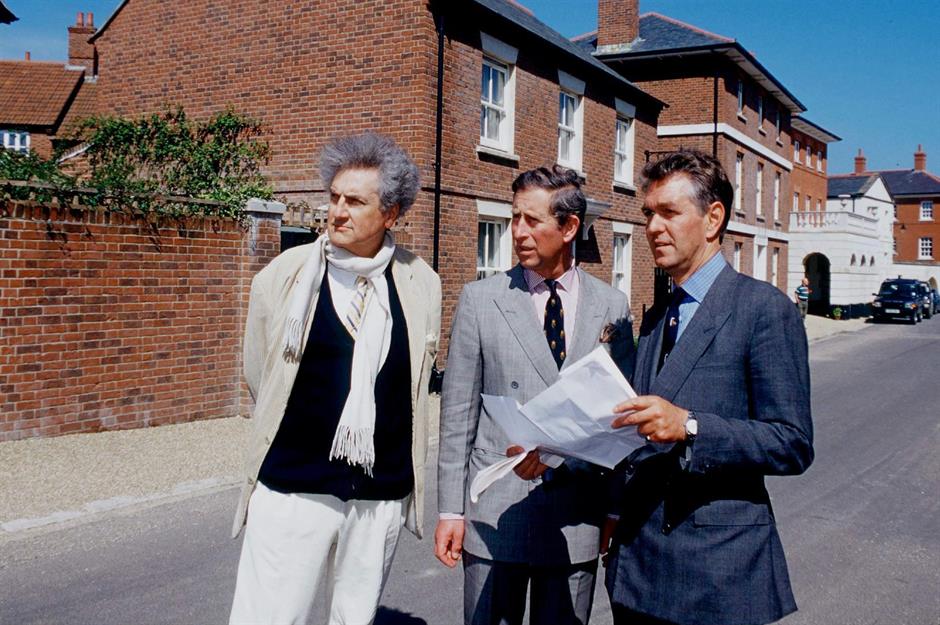
Famous for his love of classical architecture, King Charles lll is creating a model town on his own Duchy of Cornwall land on the fringes of Dorchester, Dorset. He's named it Poundbury. A medley of Georgian houses, Dorset cottages and even a miniature replica of Buckingham Palace, it is intended to be a place of beauty, reflecting local character. Private and social housing will stand side-by-side, and people can walk to the shops, school and places of work with ease. Let's see how the King's town is coming along...
Why did the King build his own town?

Due for completion in 2027, construction on the 400-acre development began in 1993. Today, Poundbury is home to more than 4,000 people, with another 2,000 working in its shops, offices, factories and cafes. Now that King Charles has ascended the throne, the new Duke of Cornwall, Prince William, will take the reins. But where did it all begin, and why did the King decide to build his own town?
The origins of the dream
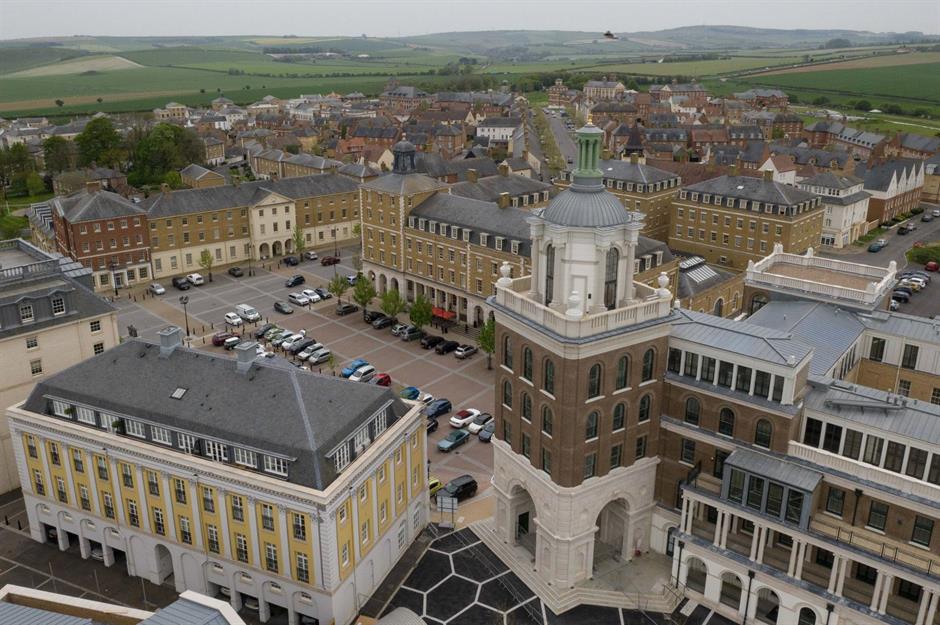
The then Prince of Wales (aka the Duke of Cornwall) was well known for his outspoken criticism of modernist architecture. He infamously called plans for the extension of London’s National Gallery a “monstrous carbuncle” and five years later outlined his views on urban planning in his book A Vision of Britain, which championed traditional architecture, closer communities and sustainability. It would provide the blueprint for his vision for the idyllic town of Poundbury.
Master builders

In 1988, he commissioned the visionary urban theorist Leon Krier (standing to the left of the King in this image) to produce a plan for developing Poundbury. His brief was to create an autonomous extension to the nearby town of Dorchester blending in with traditional Dorset architecture, using the urban design principles described in A Vision of Britain. The overall design reflects a traditional English village with a mix of residential, commercial and retail spaces, all within easy walking distance.
The master plan
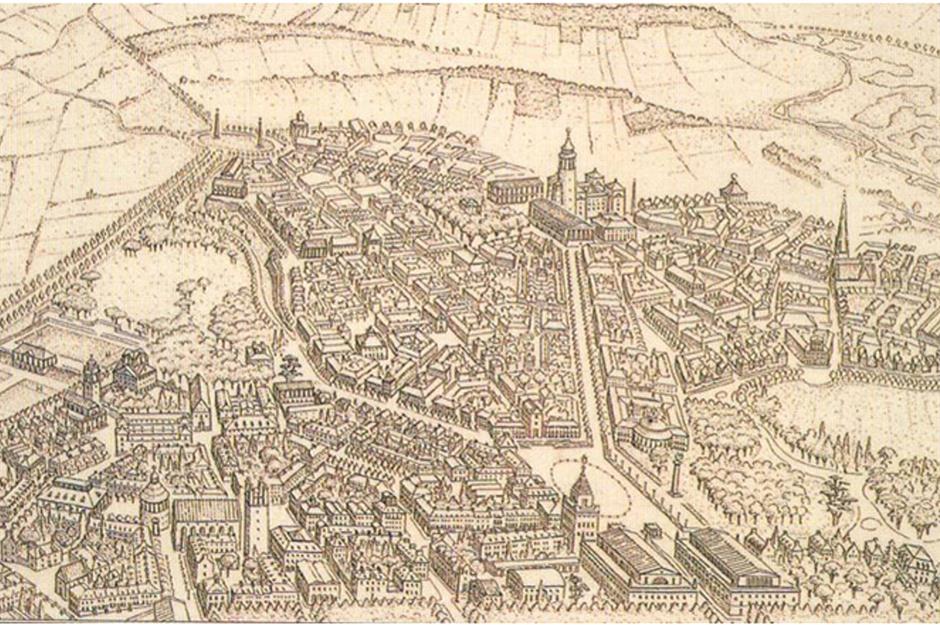
The resulting Poundbury master plan, which was shared with local residents, divided Poundbury into four distinctive quarters, each one designed by handpicked architects. The first phase, which began in 1993, was completed in 2001, while the final section, the North-West Quadrant, is expected to be finished by 2027. Poundbury will have increased the population of Dorchester by about one quarter, with an eventual community of about 5,800 people.
A passion for traditional architecture
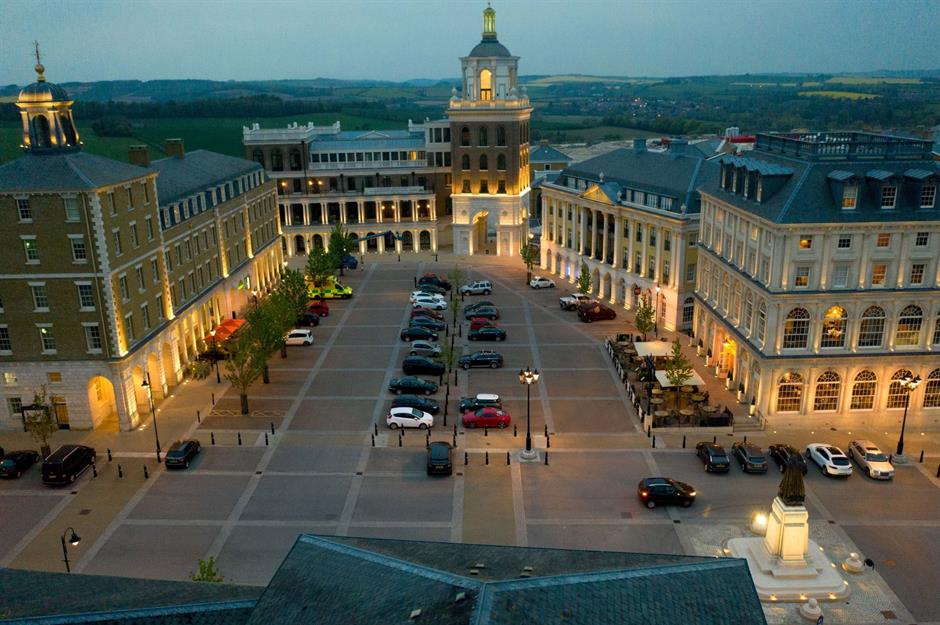
Central to the design is its architecture. The King has long since believed that one of Britain’s greatest strengths is the regional variation of its towns and villages. From its Dorset flint cottages to its Georgian and Regency revival townhouses, Poundbury draws on a rich tradition of architectural styles, using local materials and craftsmen where possible: “There are architects who can design with sensitivity and imagination so that people can live in more pleasant surroundings,” Charles told the BBC.
Affordable housing

The overriding goal was to build integrated affordable housing that people actually wanted to live in, rather than the soulless isolated housing estates that had sprung up on the edges of cities around the UK. “When I set out on this venture, I was determined that Poundbury would break the mold of conventional housing development in this country,” the former 24th Duke of Cornwall says on the Duchy of Cornwall’s website.
Community feeling

Residents say they love living in Poundbury because it feels like a community. People live and work here, so they have regular contact with their neighbors and the layout of its streets and lanes, interspersed with small squares, has been designed to encourage walking and cycling. “The entire master plan was based upon placing the pedestrian, and not the car, at the center of the design,” said the King.
Mixed-use buildings
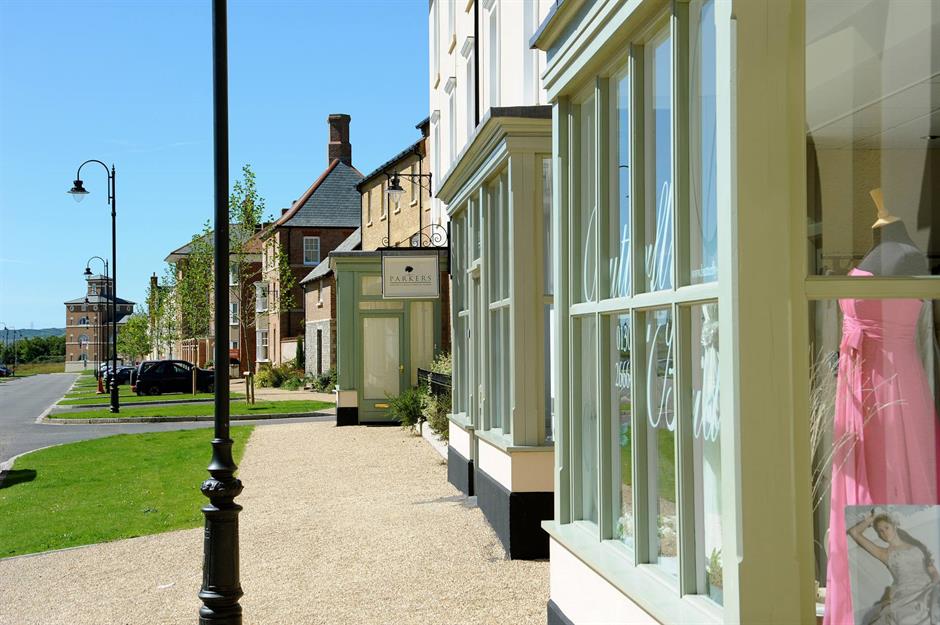
Likewise, a focus on mixed use has seen Poundbury combining residential, retail and business uses with public amenities, so that many people are able to live, work and socialize here without ever leaving town or using their cars, which is also eco-friendly. Offices and workshops have been built in among the housing, while a plethora of shops and small businesses have flourished and helped create this unique sustainable community.
A feudal Disneyland
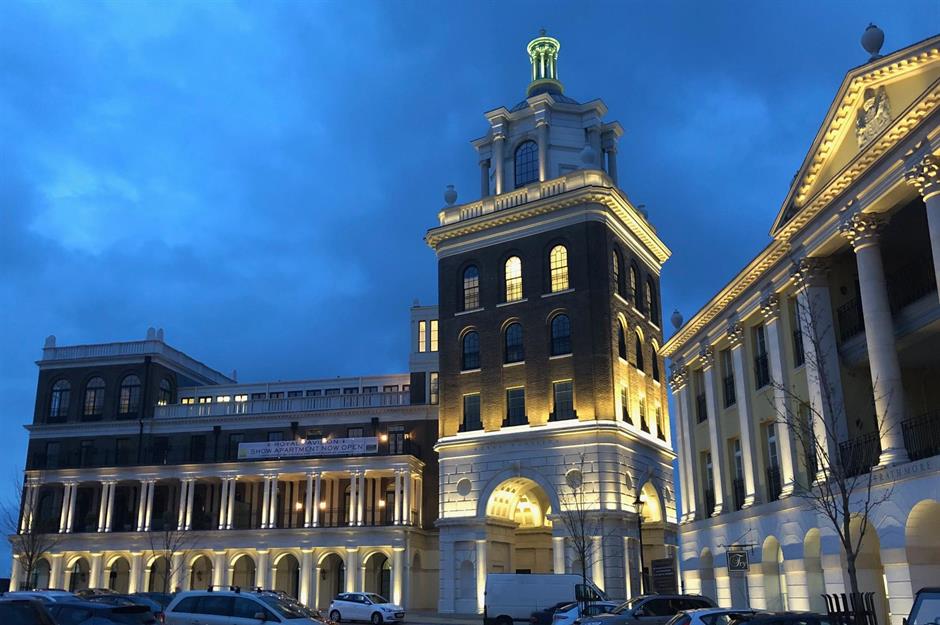
Initial reception of Poundbury was mixed, however. Some dubbed it a “feudal Disneyland”, a vanity project or a whim of the then Prince of Wales, and it struggled to attract residents. Critics argued that Poundbury was just a "ghost town", an artificial and idealized version of a traditional town that lacked the diversity or the soul that characterizes older settlements.
Proving the sceptics wrong

Nonetheless, three decades on, Poundbury is a thriving successful town which has been copied both in the UK and abroad. “Many people said that it could never succeed, but I am happy to say the sceptics were wrong,” the former Duke of Cornwall says on his website. But what’s Poundbury really like? Join us on a tour of the King’s vision of the perfect English town….
Phase One

The market hall on Pummery Square, which is the hub of Phase One of Poundbury’s construction, would not be out of place in a medieval village. Designed by architect John Simpson, it was completed in 2001 and is used for public and theatrical events. Other buildings on the square include the Village stores, The Poet Laureate Pub (named in honor of Ted Hughes) and other small shops and cafés.
Social housing
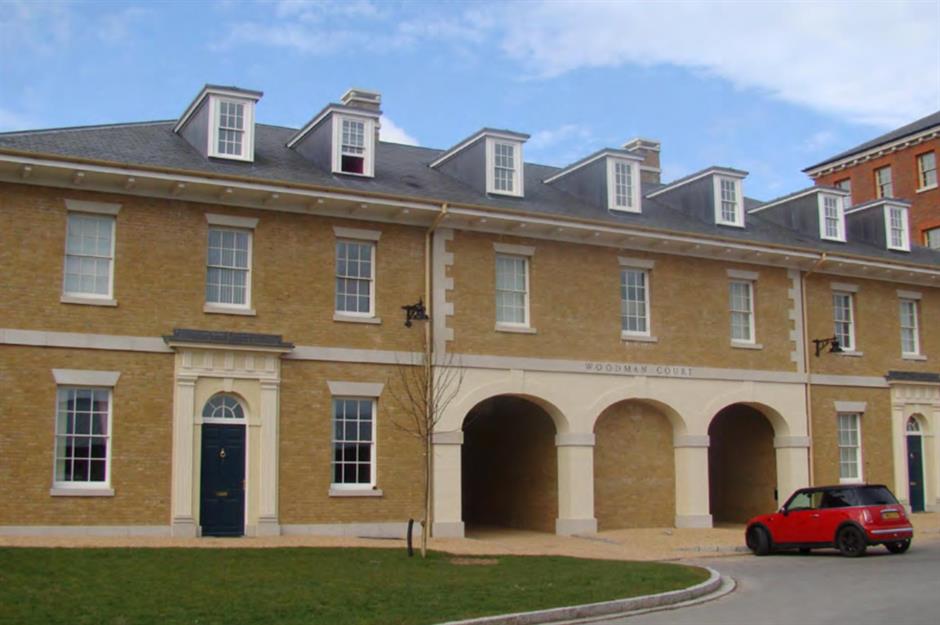
The second phase of the project was granted planning permission in 1999 and provided 900 dwellings and six hectares of employment space over a ten-year development period. In Poundbury, 35% of homes being built are affordable housing for rental or shared ownership by local people. Affordable homes are integrated with private homes and built to the same high standards, so that they are almost indistinguishable.
Artisan atmosphere
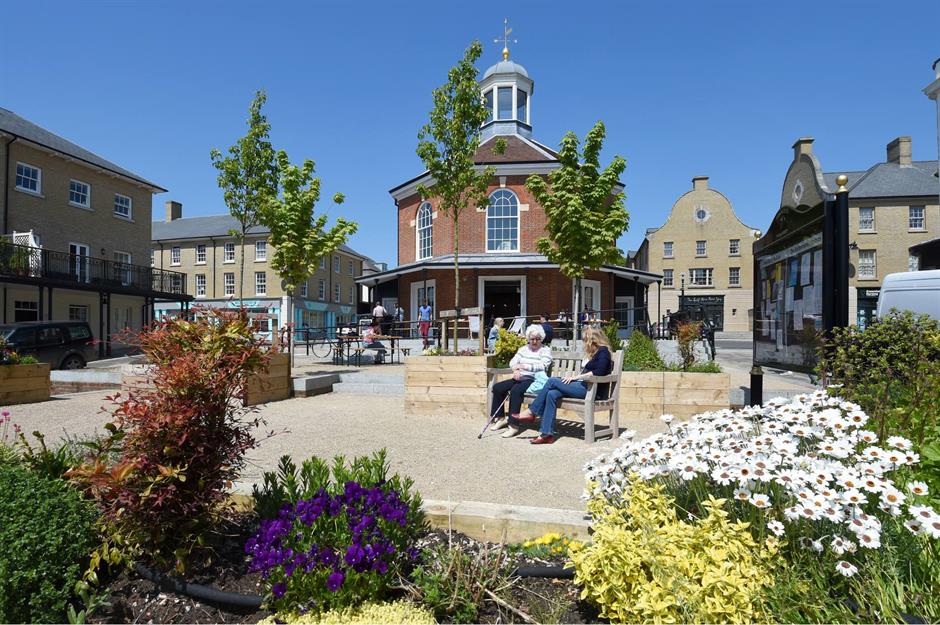
The focal point of the South West Quadrant of the town is the Buttermarket, a mixed-use development featuring nine characterful buildings housing 18 boutique shops and workshops around a main square, including a post office and a hair salon. Part of the second phase, which was granted planning permission in 2006, regular community events take place here, including Christmas markets and Easter egg hunts.
Small businesses
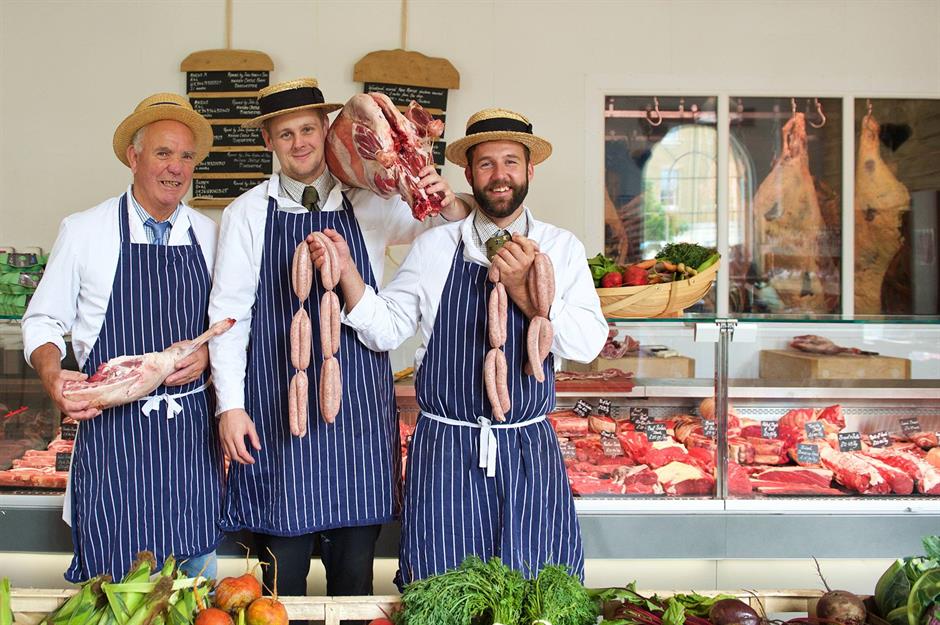
According to the Duchy of Cornwall, there are currently 250 individual businesses operating in Poundbury, employing over 2,600 people. These include grocery stores and bakeries, beauty salons, bicycle repair shops and award-winning A Brace of Butchers, seen here. Many have been inspired to set up here due to the quality of the environment, affordable rates and sense of community.
Charles and the chocolate factory
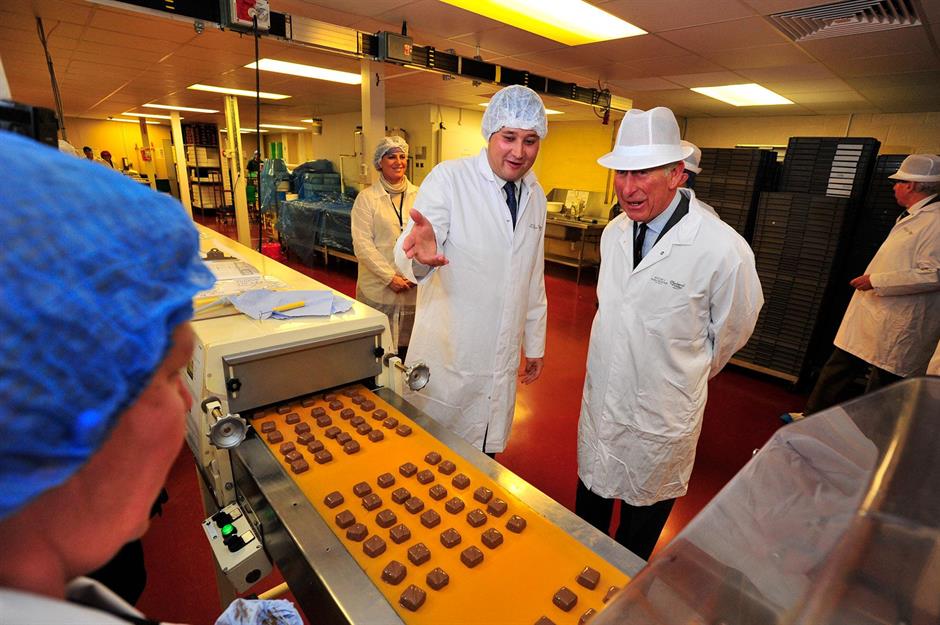
Located in the same quadrant is Poundbury’s chocolate factory, which opened in 1998 and was taken over in 2014 by leading chocolatier Charbonnel et Walker, who supply retailers such as John Lewis, Harrods and Selfridges. The then Prince Charles visited the factory several times, including in 2015, after the factory was extended to meet demand.
Queen Mother Square
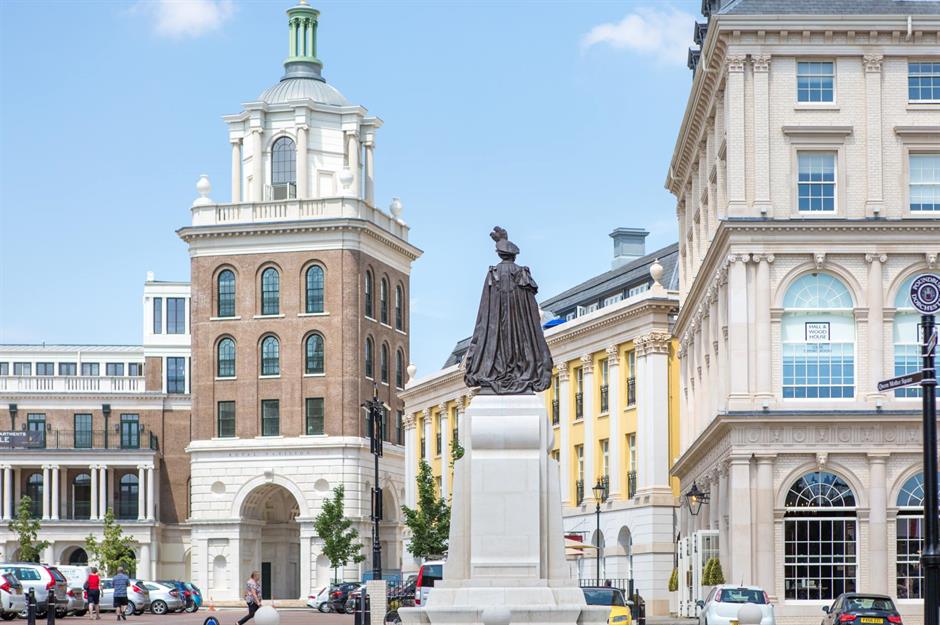
At the heart of Phase Three and Four, and Poundbury itself, is Queen Mother Square, which was formally opened by Her Majesty The Queen in 2016 and features a statue of Her Majesty Queen Elizabeth, The Queen Mother, by sculptor Philip Jackson. The buildings meanwhile, were designed by Quinlan and Francis Terry and Ben Pentreath.
The Duchess of Cornwall
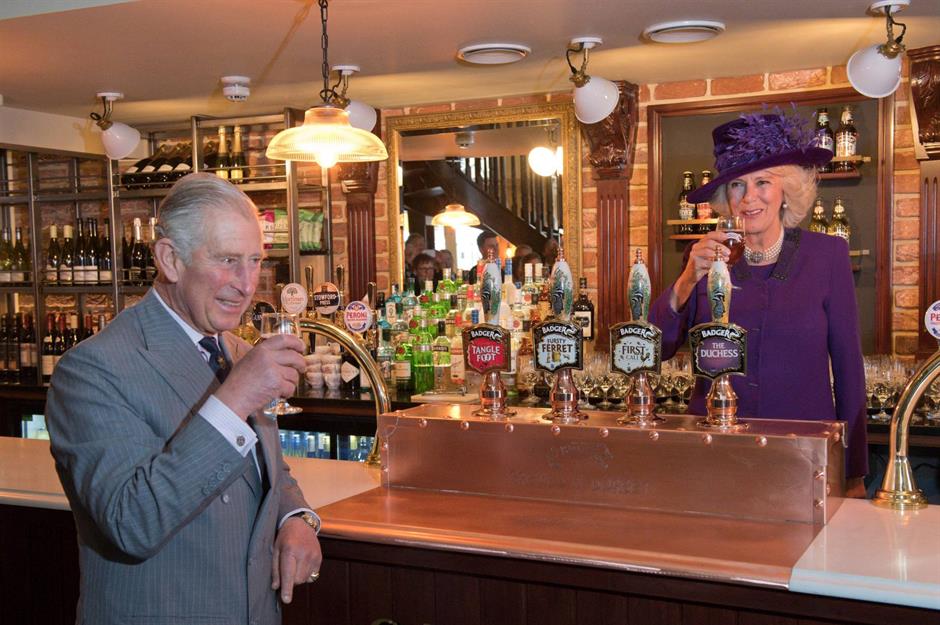
While the royal party were there, the then Duke and Duchess of Cornwall popped in to The Duchess of Cornwall Inn, which was inspired by the Ritz in London, a favorite haunt of the Queen Mother’s. The Duchess even found time to try her hand at pulling a pint, although the Prince's favorite daily tipple, according to reports, is a dry martini.
Buckingham Palace replica
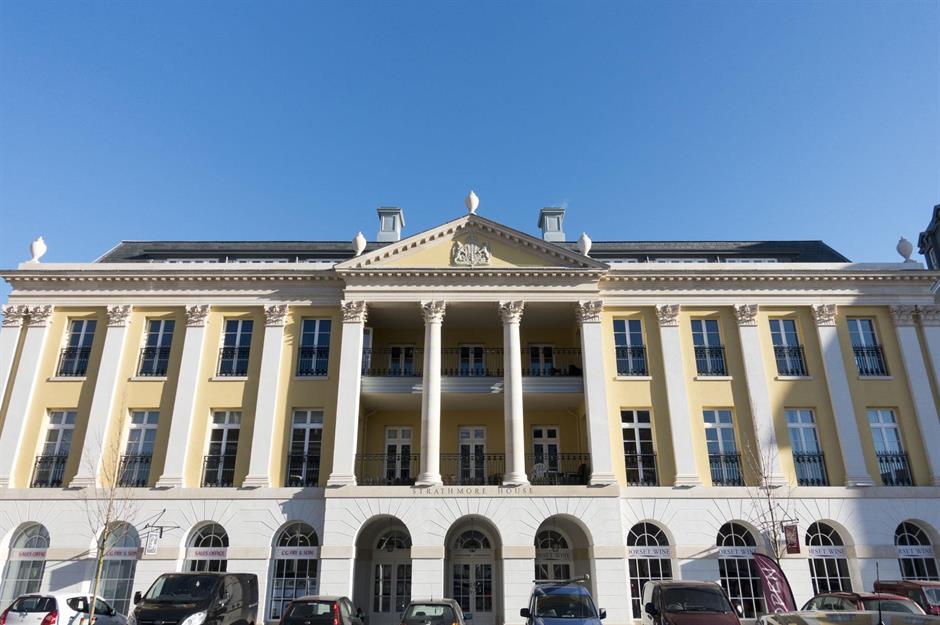
Strathmore House
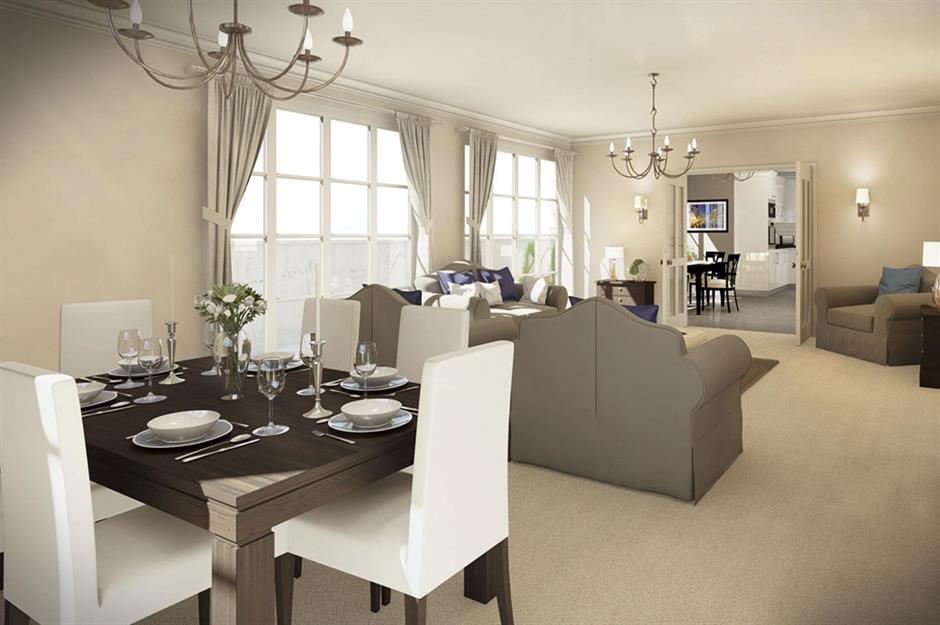
The apartments are stylish and super-spacious but, as you might expect, they don’t come cheap. A first-floor pad with three bedrooms and high ceilings was recently on the market for a cool $1.6 million Meanwhile, the most expensive home on the square is the penthouse at The Royal Pavilion, which was designed by Ben Penreath and listed at $2.1 million.
Reasonably priced homes
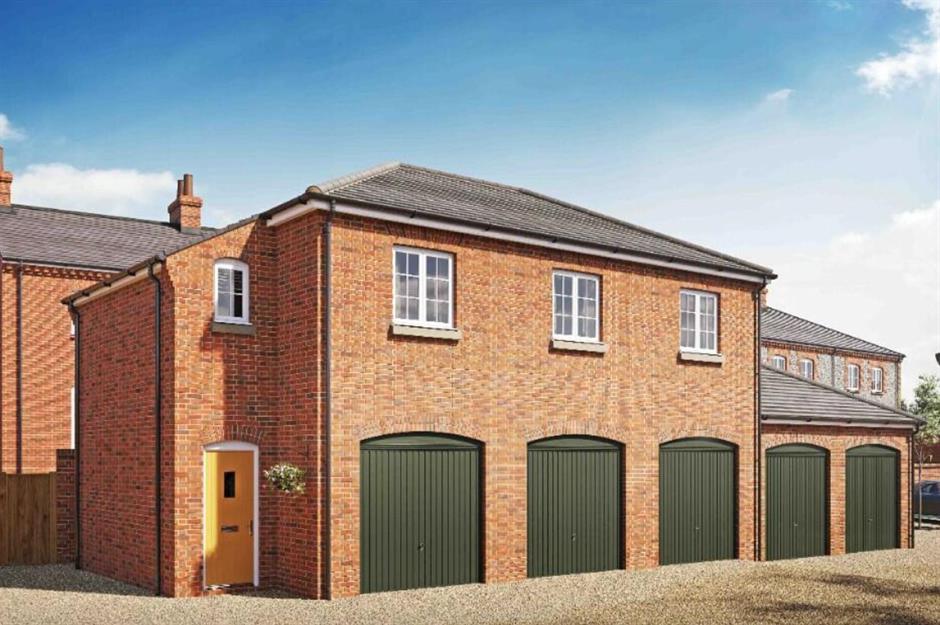
For the less well-heeled, there’s this very reasonably priced coach house, which is currently under construction in the final North-East Quadrant of the town and listed at just $375,000. It has two double bedrooms and a contemporary bathroom. The average price for a flat in Poundbury in 2022 was $294,000, while you could pick up a terraced house for around $630,000.
Coach House

Back in the Coach House, there is a very stylish living room and kitchen, with stainless steel appliances, a single garage and communal parking. It’s close to the Great Field, which is Poundbury’s largest green space, and for families with young children, Damers First School, which relocated to Poundbury in 2017, is just down the road.
Local schools

Poundbury is surrounded by a range of state schools, all highly rated, including the Thomas Hardye School & Sixth Form, which is one of the highest performing in the UK. Poundbury is served by two primary schools, the Prince of Wales First School and Damers First School, which relocated to a new building here in 2017. The move enabled the school to improve its environmental credentials, growing its own food and reducing waste and recycling.
Places to play

The school has direct access to the Great Field, the largest green space in Poundbury, providing 12 hectares of grassland with a network of paths and more than 450 trees and 26,000 shrubs. The southern part of the field features sports pitches, an outdoor gym area and a magnificent new play area for toddlers through to teenagers, which was opened by the King in May 2022.
Green credentials

A passionate environmentalist, it was important that the town lived up to the King’s green credentials. He has ensured that buildings have energy-conserving features, such as efficient insulation, double-glazing, condensing boilers and water meters, as well as slate solar panels, ground-heat recovery systems and rainwater recycling, according to The Daily Mail. There’s also electrical vehicle charging capability in all garages. Françoise Ha is Chair of the Poundbury Residents Association, told The Big Issue “Poundbury is an interesting idea. It’s been like Marmite before because it was green fields, but I think it’s good at what it’s trying to do.”
Renewable energy

And if that’s not enough to earn Poundbury its green card, Rainbarrow Farm was the country’s first full-scale anaerobic digester and biomethane-to-grid plant. Purpose-built by the Duchy of Cornwall as a joint venture with local farms, it provides 100% renewable bio-methane gas from sustainable sources of crops and feeds this into the national gas distribution network to heat Poundbury and up to 90,000 homes in West Dorset.
Retirement living

For the older members of the community, there’s a wealth of accommodation to suit all tastes and budgets, including this McCarthy Stone retirement development, which looks like a con-verted Victorian warehouse. “We went a bit crazy and thought we’d do a bit of Shoreditch or Shad Thames,” says architect George Saumarez Smith. A one-bedroom flat is available here for rent from $3,192 per month.
Poundbury replicas
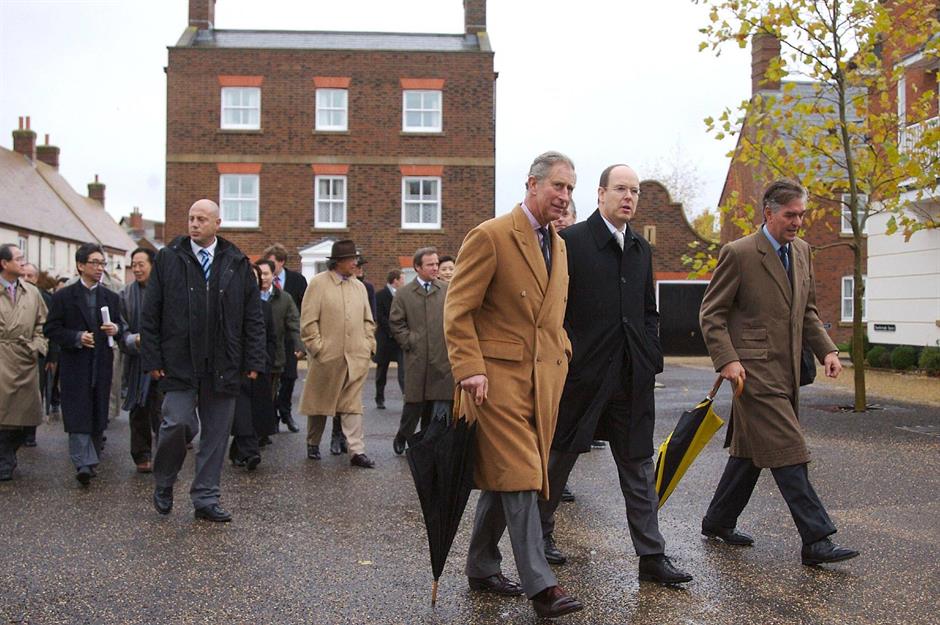
The King is rightly proud of his achievements in Poundbury, which have attracted the attention of architects and town planners the world over, including dignitaries like Prince Albert of Monaco, seen here in 2006. According to the Duchy of Cornwall, a 2018 report concluded that the town is already contributing over $123 million to the local economy, while its principles have been incorporated into the British Government’s Planning Policy and replicated across the country reports The Telegraph.
A garden paradise
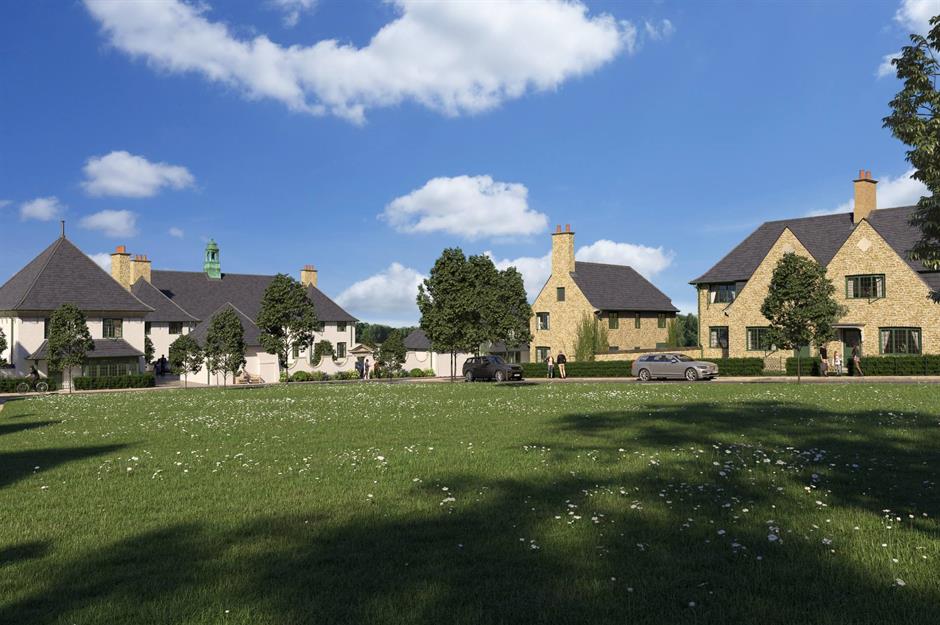
It’s not all harmonious living in Poundbury, of course. A recent report revealed a spat between neighbors, when one keen gardener was forced to remove a colorful array of potted plants outside her home. It’s a problem that will be hopefully avoided in the final phase of construction however, which has been inspired by the Edwardian Garden Movement, as represented here. “HRH loves things that are quirky,” says architect Ben Pentreath. Once construction of Poundbury is complete, the Duchy of Cornwall will leave Poundbury to run itself, says The Guardian.
Poundbury residents celebrate the King
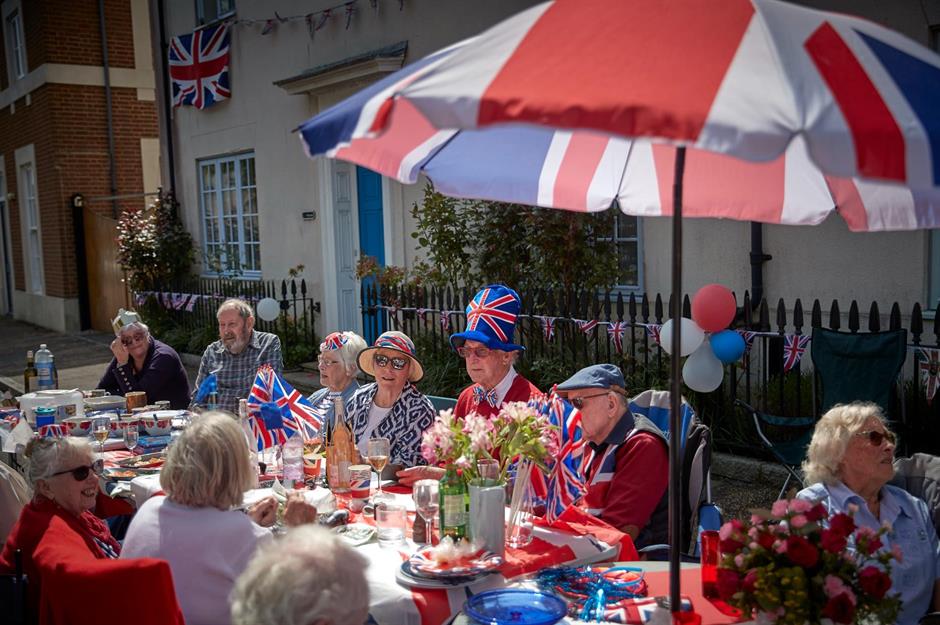
Krier, who drew up the Poundbury master plan, had hinted several years ago that, once Poundbury was complete, he and the then Prince Charles would go on to build a small modernist town, "to show them how to do it". But that seems unlikely now that the King has ascended the throne. The residents of Poundbury, seen celebrating here on the day of the King’s coronation, will be pleased he had time at least to build their ideal English town....
Loved this? Follow us on Facebook for more fascinating stories on the royal family and their residences
Comments
Be the first to comment
Do you want to comment on this article? You need to be signed in for this feature